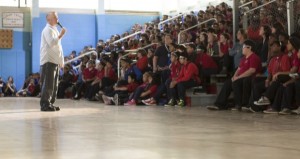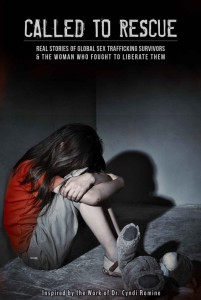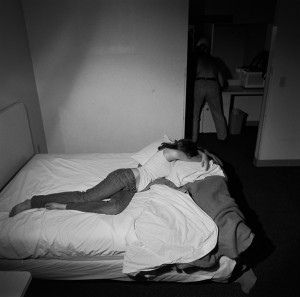As long as law enforcement serves and protects the innocent against criminal activity, personal retribution is not an option. However, when public safety institutions fail to take action against known criminals and do not intervene to assist victims whose safety is at risk, then they seem to be serving and protecting criminal activity. When criminal justice is perceived as justice for criminals, and victims are ignored, desperate people will seek desperate solutions. I do not condone vigilante justice, but justice must be served, and in the case of the death of Calvin Sneed, a known pimp, the burden of justice was placed squarely on the shoulders of Barry Gilton and Lupe Mercado.
On Saturday, June 9 a party in Shiner, TX turned deadly when a 23-year-old father caught a 47-year-old acquaintance sexually molesting his 4-year-old daughter. The young dad beat the man to death on the spot. Thus far, no charges have been filed as Nancy Grace and a slew of experts and pundits, including me, have lauded the young man as a “father of the year,” for his impulsive, deadly action. The District Attorney has sent the case to the Grand Jury. If the Grand Jury does file charges it will probably be impossible to find a Texas jury that would convict this father for protecting his young daughter from a violent sex crime.

Calvin Sneed
At 2:00 a.m., on Monday June 4, 22-year-old pimp Calvin Sneed was gunned down near San Francisco’s Candlestick Park. On June 9, Barry Gilton and Lupe Mercado were charged with murdering Sneed, conspiracy to commit murder and one count of discharging a firearm at an occupied vehicle. They are both being held in lieu of $2-million bail.
About a year ago Barry Gilton and Lupe Mercado’s 17-year-old daughter was lured away from her San Francisco home by 22-year-old Calvin Sneed. Soon, Snead was forcing their daughter to have sex with strangers throughout California. Upon learning that their daughter was appearing in on-line escort ads, Gilton and Mercado entered her in several missing and exploited children registries and sought help from several law enforcement agencies. The authorities were either unable or unwilling to assist. San Francisco Attorney General George Gascon said that as a father, he understood “the frustration that the parents must have felt…. But taking the law into your own hands is not an acceptable solution.”
According to the Trafficking Victims Protection Act (TVPA), signed into law by President Bush in 2000, sex trafficking occurs when a commercial sex act is induced by force, fraud, or coercion, or in which the person induced to perform such act has not attained 18 years of age. In California the age of consent is 18, so clearly laws were being violated. Yet the authorities refused to help when desperate parents asked them to intervene when a pimp forced their underage daughter to have sex with strangers over the long term.
Pimping involves a complex relationship between a male pimp and one or more women and/or girls. The pimp wields complete control and induces commercial sex acts in order to make money. The pimp attains authoritative levels of control and obedience through intense manipulation that begins during the grooming process. Manipulations include feigned affection, brutal violence, and verbal, psychological, and/or emotional abuse. This breaking-down phase takes a girl from healthy adolescent sexual boundaries to commercial sex with strangers. This process has been widely-documented and replicated by pimps nationwide. In the trafficking paradigm, this process involves force, fraud, and coercion.
Seasoning often involves beating the girls with hands, fists, and kicking, as well as with objects such as bats, tools, chains, and cords. Burning of personal items to foster hopelessness and demoralization or directly burning women and girls using cigarette/cigar butts is another common tactic. Underage prostitutes also fear rape or gang rape, being locked in closets, the trunks of cars or rooms for indeterminate amounts of time. They also face other torture techniques such as food or water deprivation, or various forms of bondage such as chaining individuals to items or tying them up; direct verbal insults, name-calling, threats, mind control, brainwashing, cognitive re-programming, and other mind boggling forms of violence.
It is well-documented that pimps establish mandatory monetary quotas that typically range from $500 – $1,000. The women and girls under their control must fulfill their quota in order to end each night of commercial sex. Quotas are strictly enforced, and the punishment for failing to meet a quota is severe physical retaliation from the pimp. In pimp-controlled situations, the women and girls keep zero of this money and turn over 100-percent of the profits to the pimp.
Why don’t underage prostitutes leave, given that it is a difficult life and the pimp has all the advantages? For a wide variety of reasons, girls under a pimp’s control will often not self-identify as victims of human trafficking or seek help on their own for a variety of reasons. They may be locked indoors. They face or fear severe physical retaliation, including beatings and rape, if they are caught trying to escape. The pimp threatens reprisals against family members. The girls feel shame about the activities they have been forced to perform. They may have a debt to the pimp that they believe they need to pay off or feel loyalty, similar to Stockholm syndrome, to the pimp. They may be resigned to their fate, or may have no personal resources to assist them. Finally, the girls may distrust law enforcement, and given the current scenario, that is perfectly understandable.
San Francisco’s District Attorney says that, “Deadly force is only justified when you’re defending someone from an immediate threat of deadly force or great bodily injury”. Calvin Sneed was a monster who forced Gilton and Mercado’s underage daughter onto the street at all hours, demanded that she have sex with any stranger willing to pay the price, and advertised her in online sex ads. She was a defenseless girl, subject to AIDS and numerous other STD’s, oftentimes alone with anonymous strangers who lurk in the night. What part of that scenario does not constitute a, “threat of deadly force or great bodily injury”? The District Attorney says that they are looking into whether or not, “She was there willingly or forced to be there,” however according to the law that is not a consideration. She is an underage serial crime victim that the authorities were unwilling to acknowledge let alone rescue. Her parents attempted numerous avenues of legal recourse and were shut down every time.
Attorneys for Gilton and Mercado say that the couple is innocent. They acknowledge that they had a motive, but point out that there are no eye witnesses and no murder weapon. Gilton’s attorney Eric Safire points out that, “What we do know is that the victim is a known gang member, he was out at 2 a.m. in a high crime area—I can only presume he was engaged in his normal and customary [pimping] activities. He was subject to gang violence.”
What’s wrong with this picture? How can we condemn a parent, no matter what they do, for protecting their child? Whether it’s being caught in the immediacy of the victimization or watching from home as their child is being serially victimized in the public arena. Parents are fighting for and having to protect their children, who are being sexually victimized, in ways that are illegal, either because law enforcement is not present or refuses to make themselves present. As the parent of a murdered child, I understand. If I were given the chance to protect and save Polly I would have done whatever I needed to do, including shooting her killer, who now sits on California’s death row, to death. We need to protect our children. Whether it is writing new laws or enforcing existing laws. If it means keeping perpetrators behind bars, or forcing law enforcement to handle cases in times of tight budgets, we need to support parents, who are victims themselves, to protect and preserve their children from violent criminal activity.




























